Human Orbital Spaceflights
![]()
International Flight No. 220STS-102Discovery (29)103rd Space Shuttle missionUSA |
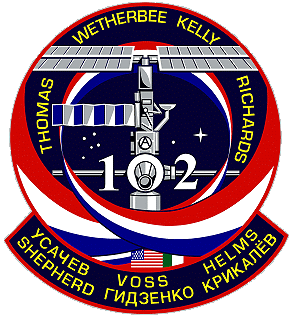 |
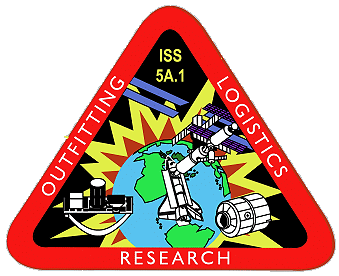 |
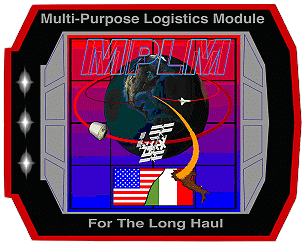 |
||
![]()
Launch, orbit and landing data
walkout photo |
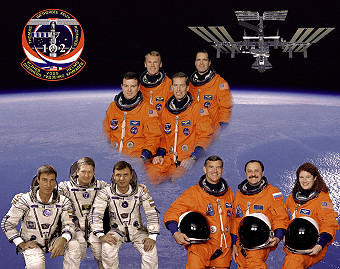 |
||||||||||||||||||||||||||||||||
alternative crew photo |
|||||||||||||||||||||||||||||||||
alternative crew photo |
|||||||||||||||||||||||||||||||||
alternative crew photo |
Crew
| No. | Surname | Given names | Position | Flight No. | Duration | Orbits | |
| 1 | Wetherbee | James Donald "Wexbee" | CDR | 5 | 12d 19h 49m 32s | 201 | |
| 2 | Kelly | James McNeal "Vegas" | PLT, RMS | 1 | 12d 19h 49m 32s | 201 | |
| 3 | Thomas | Andrew Sydney Withiel | MS-1, EV-1, RMS, PLC | 3 | 12d 19h 49m 32s | 201 | |
| 4 | Richards | Paul William | MS-2, EV-2, FE, IV-1 | 1 | 12d 19h 49m 32s | 201 | |
| 5 | Voss | James Shelton | MS-3, EV-3 | 5 | 167d 06h 40m 49s | 2635 | |
| 6 | Helms | Susan Jane | MS-4, EV-4, IV-2 | 5 | 167d 06h 40m 49s | 2635 | |
| 7 | Usachyov | Yuri Vladimirovich | MS-5 | 4 | 167d 06h 40m 49s | 2635 |
Crew seating arrangement
|
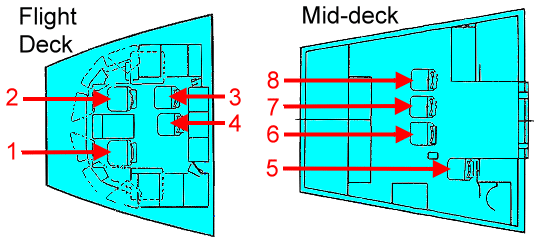 |
|
||||||||||||||||||||||||||||||||||||
Backup Crew
|
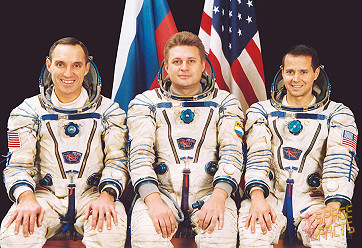 |
||||||||||||||||||||
Hardware
| Orbiter : | OV-103 (29.) |
| SSME (1 / 2 / 3): | 2048-2A (3.) / 2053-2A (3.) / 2045-2A (4.) |
| SRB: | BI-106 / RSRM 78 |
| ET: | ET-107 (SLWT-12) |
| OMS Pod: | Left Pod 01 (32.) / Right Pod 03 (30.) |
| FWD RCS Pod: | FRC 3 (29.) |
| RMS: | 301 (20.) |
| EMU: | EMU No. 3010 (PLSS No. 1010) / EMU No. 3003 (PLSS No. 1003) |
Flight
|
Launch from Cape Canaveral (KSC) and
landing on Cape Canaveral (KSC), Runway 15. A new International Space Station crew, the first flight of an Italian-built Multipurpose Logistics Module (MPLM) and the first scientific rack for the U.S. laboratory Destiny highlighted the STS-102 mission (ISS-07-5A.1 MPLM Leonardo) of Discovery. The crew changeout was the first for the ISS. The Leonardo Multi-Purpose Logistics Module (MPLM), which was built by the Italian Space Agency (ASI), was the first of three such pressurized modules that serve as the International Space Station's "moving vans", carrying laboratory racks filled with equipment, experiments and supplies to and from the International Space Station aboard the space shuttle. The cylindrical module was about 6.4 meters (21 feet) long and 4.6 meters (15 feet) in diameter. It weighed about 9,000 pounds (almost 4.1 metric tons). It could carry up to 20,000 pounds (9.1 metric tons) of cargo packed into 16 standard space station equipment racks. The unpiloted, reusable logistics module functioned as both a cargo carrier and a space station module when it is flown. In order to function as an attached station module as well as a cargo transport, Leonardo contained components that provide some life support, fire detection and suppression, electrical distribution and computer functions. Eventually, the modules also carried refrigerator freezers for transporting experiment samples and food to and from the station. On this mission, Leonardo was mounted in the space shuttle's payload bay for launch and remained there until after docking. Once the shuttle was docked to the station, the shuttle's robotic arm removed Leonardo from the payload bay and berthed it to the Unity Module on the ISS. During its berthed period to the station, system racks and individual components were transferred to the ISS. After Leonardo was unloaded, used equipment and trash was transferred to it from the station for return to Earth. The Leonardo logistics module then was detached from the station and positioned back into the shuttle's cargo bay for the trip home. When in the cargo bay, Leonardo was independent of the shuttle cabin, and there was no passageway for shuttle crewmembers to travel from the shuttle cabin to the module. Leonardo was filled with equipment and supplies to outfit the U.S. laboratory Destiny, which was carried to the International Space Station on STS-98 in February 2001. Of the 16 racks the module could carry, this mission brought six ISS system racks, three resupply stowage racks, four resupply stowage platforms, and the first scientific experiment rack. Discovery's rendezvous and docking with the International Space Station began with the precisely timed launch of the shuttle on a course for the station. During the first two days of the mission, periodic engine firings will gradually brought Discovery to a point about nine statute miles (23.3 km) behind the station, the starting point for a final approach to the station. About two and a half hours before the scheduled docking time on Flight Day Three, Discovery reached the point about nine statute miles - 48,600 feet (14,813 meters) - behind the ISS. At that time, Discovery's engines were fired in a Terminal Intercept (Ti) burn to begin the final phase of the rendezvous. Discovery closed the final miles to the station during the next orbit of Earth. As Discovery closed in, the shuttle's rendezvous radar system continued to track the station and provided range and closing rate information to the crew. During the approach toward the station, the shuttle had an opportunity to conduct four, small mid-course corrections at regular intervals. Just after the fourth correction was completed, Discovery reached a point about a half-mile (900 meters) below the station. At that time, about an hour before the scheduled docking, Commander James Wetherbee took over manual control of the approach. James Wetherbee slowed Discovery's approach and flew to a point about 600 feet (182.9 meters) directly below the station, from which he began a quarter-circle of the station, slowly moving to a position in front of the complex, in line with its direction of travel. During the rendezvous, James Wetherbee was assisted by Pilot James Kelly in controlling Discovery's approach. Mission Specialists Andrew Thomas and Paul Richards also played key roles in the rendezvous, with Andrew Thomas operating the shuttle's docking mechanism and Paul Richards assisting with the rendezvous navigation. Andrew Thomas and Paul Richards used a handheld laser pointed through the shuttle windows to provide supplemental information on the station's range and the shuttle's closing rate. James Wetherbee flew the quarter-circle of the station, starting at a point 600 feet (182.9 meters) below, while slowly closing in on the complex, stopping at a point a little over 300 feet (91.4 meters) directly in front of the station. From that point, he began slowly closing in on the station - moving at a relative speed of about a tenth of a foot per second (3 centimeters per second). Using a view from a camera mounted in the center of Discovery's docking mechanism as a key alignment aid, James Wetherbee precisely centered the docking ports of the two spacecraft. James Wetherbee flew to a point where the docking mechanisms are 30 feet (9.14 meters) apart, and paused briefly to check the alignment. For Discovery's docking, James Wetherbee maintained the shuttle's speed relative to the station, and keeps the docking mechanisms aligned to within three inches of one another. When Discovery made contact with the station, latches automatically attached the two spacecraft together. Immediately after Discovery docked on March 10, 2001, the shuttle's steering jets were deactivated to reduce the forces acting at the docking interface. Shock absorber-type springs in the docking mechanism dampened any relative motion between the shuttle and the station. Once relative motion between the spacecraft had stopped, Andrew Thomas commanded the docking ring on Discovery's mechanism to retract, closing latches in the mechanism to firmly secure the shuttle to the station. The crew transfer, the first for the station, was among the mission's top priorities. Expedition One Commander William Shepherd, Soyuz Commander Yuri Gidzenko and Flight Engineer Sergei Krikalyov were replaced by Expedition Two Commander Yuri Usachyov and Expedition Two Flight Engineers Susan Helms and James Voss. The transfer took place in a carefully orchestrated, one-at-a-time process that ensured three current members of the station crew were able to come home, at any time during the switch, aboard the Soyuz spacecraft attached to the station. Expedition Two crewmembers officially joined the station when they install their seat liners in the Soyuz. Equipment transfer to the ISS and outfitting Destiny for the arrival of the Space Station Remote Manipulator System (SSRMS), the space station's robotic arm on STS-100 also was among the major priorities of Discovery's flight. Much of that equipment was transferred from the Multi-Purpose Logistics Module (MPLM), a pressurized moving van module designed to be taken into orbit, attached to the space station, and then, after unloading, brought back to the orbiter's cargo bay for return to Earth. The Italian-built MPLM, named Leonardo, was attached to the nadir, or Earth-facing, berthing port of the Unity node. Before that could happen a docking port, Pressurized Mating Adaptor 3 (PMA 3), must be removed from that berthing port. It will be attached to an adjacent berthing port on Unity's left side. The PMA 3 move was made during the spacewalk by James Voss and Susan Helms. The spacewalk was preceded by transfer of a spacesuit and two Simplified Aids for EVA Rescue (SAFER) devices from the station to the shuttle shortly after docking. Leonardo brought six systems racks to the station. Among them were two robotic workstation racks for control of the station's robotic arm and the four cameras mounted on it. Two were DC-to-DC Converter Units (DDCUs) which convert electrical power from the station's solar arrays to a form usable by station systems and experiments. One was the U.S. Lab Avionics 3 rack with components supporting both the Ku-Band communications system and the command and control system. The sixth was a Crew Health Care System rack. The Ku-Band is used for high data rate communications, including downlink of television pictures. The command and control system is operated from the U.S. laboratory and controls the attitude or orientation in space of the station, using four 800-pound (363 kg) gyroscopes mounted in the Z1 Truss of the ISS. Among racks transferred by the ISS crew was the Human Research Facility, the first scientific rack to be brought to the station. While it is significant in that it marked the beginning of major research capability on the station, its transfer was a lower priority than transfer of the six systems racks, the three resupply stowage racks and the four resupply stowage platforms from Leonardo - indeed it were the last of the racks to be transferred. While the experiment rack was activated and checked out, the Ku-Band and a communications outage recorder must working to support data recording and downlink. After transfer of the Human Research Facility, transfer of materials into Leonardo began. Such materials - batteries at the end of their designed lives, used filters, packing materials and garbage are examples - were returned to Earth. Other priorities included activation and checkout of transferred racks, operation of the IMAX camera by the station crew and a series of tests supporting station assembly. With STS-102 the first time the Multi Purpose Logistics Module (Leonardo) was used to bring supplies to the station. The Discovery also carried an Integrated Cargo Carrier (ICC). The had the External Stowage Platform-1 (ESP-1) mounted on its underside. ESP-1 was placed on the port side of 'Destiny' as a storage location for ORUs. The Integrated Cargo Carrier (ICC) was a two-part structure consisting of a waffle-like aluminum box-beam pallet and keel-yoke assembly. It was installed in the cargo bay of the space shuttle orbiter, to expand the shuttle's capacity to transport unpressurized cargo. The External Stowage Platform (ESP) was installed during the second spacewalk on the port aft trunnion on Destiny. It was a temporary home for orbital replacement units-spares stowed on the ESP and available to replace vital equipment. spacewalking astronauts also hooked up cables to provide power to the orbital replacement units stowed there. The first EVA by Susan Helms and James Voss was performed on March 11, 2001 (8h 55m - new U.S. spacewalk record) to prepare PMA-3 for repositioning from the berth to the port side of Unity to make room for Italian built Multi-Purpose Logistics Module Leonardo, which was later attached to the ISS. James Voss and Susan Helms helped relocate Pressurized Mating Adaptor 3 (PMA-3) from the lower berthing port on the Unity node to an adjacent berthing port on Unity's left side. That was done so the Multipurpose Logistics Module (MPLM) could be docked to the common berthing mechanism of the lower port. James Voss and Susan Helms started their spacewalk jobs by preparing for the PMA-3 move. This included moving a gap spanner tether and disconnecting eight cables. Next, James Voss removed the port Early Communications System antenna from the port side of the Unity Node and took it to the airlock. James Voss, on the end of Discovery's robotic arm being operated by Andrew Thomas (who shared arm duties with Pilot James Kelly), and Susan Helms then removed the Lab Cradle Assembly (LCA) from the Integrated Cargo Carrier in Discovery's cargo bay and installed it on the U.S. laboratory Destiny's aft zenith trunnion. During STS-100 the 300-pound (136 kg), four-footsquare LCA was used to secure the Launch Deployment Assembly of the station's robotic arm. On STS-100 it was used to permanently secure the S0 truss segment to Destiny, and became the structural interface between the station and the main truss. The spacewalkers run cables to Destiny for power and data and removed a thermal cover from the LCA. They then swap places, with Susan Helms moving to the foot support on the arm and James Voss becoming the free-floater. They returned to the Integrated Cargo Carrier pallet and removed the Rigid Umbilical, a wiring harness to take power, data and video between Destiny and the station's robotic arm. They transferred and installed the RU to the forward, lower side of Destiny near the Power & Data Grapple Fixture, an attachment point on Destiny for the station arm. There they removed a protective shield and connect cables. The second and final EVA by Paul Richards and Andrew Thomas occurred on March 13, 2001 (6h 21m) in which they installed a stowage platform and attached an ammonia coolant pump on the platform. Also, cables were connected, which will be needed for the Canadian built robotic arm, which will be attached to the station in a future flight. Andrew Thomas and Paul Richards removed the External Stowage Platform (ESP) from the Integrated Cargo Carrier pallet in the cargo bay and installed it on the port aft trunnion on Destiny. With James Kelly on the arm, they hooked up cables that provide heater power to orbital replacement units - spares stowed on the ESP and available to replace vital equipment. Andrew Thomas then maneuvered back to the pallet and removed the Pump and Flow Control Subassembly, the first of such spares to be left on the ESP. He transferred it to the ESP and installed it there. The Pump and Flow Control Subassembly is a 250-pound (113 kg) device that pumps and controls valves for ammonia coolant flow. Meanwhile, Paul Richards turned his attention to the LCA installed on the first spacewalk. He performed a ready-to-latch indicator test on each of the four indicators on the LCA. Paul Richards then closed two circuit interrupt devices to bring power to the DC-to-DC Conversion Units inside Destiny. Paul Richards then began a photo-documentation survey of the worksite, before he and Andrew Thomas did the post-spacewalk cleanup and go back into the airlock. Once Discovery was ready to undock, Andrew Thomas sent a command that released the docking mechanism. The initial separation of the spacecraft was performed by springs in the docking mechanism that gently pushed the shuttle away from the station. Both Discovery's and the station's steering jets were shut off to avoid any inadvertent firings during this initial separation. Once the docking mechanism's springs had pushed Discovery away to a distance of about two feet (61 centimeters), when the docking devices were clear of one another, James Kelly turned the steering jets back on and fired them to begin very slowly moving away. From the aft flight deck, James Kelly manually controlled Discovery within a tight corridor as he separated from the ISS, essentially the reverse of the task performed by James Wetherbee when Discovery docked. |
EVA data
| Name | Start | End | Duration | Mission | Airlock | Suit | |
| EVA | Voss, James | 11.03.2001, 05:12 UTC | 11.03.2001, 14:08 UTC | 8h 55m | STS-102 | Discovery - ISS | EMU No. 3010 |
| EVA | Helms, Susan | 11.03.2001, 05:12 UTC | 11.03.2001, 14:08 UTC | 8h 55m | STS-102 | Discovery - ISS | EMU No. 3003 |
| EVA | Thomas, Andrew | 13.03.2001, 05:23 UTC | 13.03.2001, 11:44 UTC | 6h 21m | STS-102 | Discovery - ISS | EMU No. 3005 |
| EVA | Richards, Paul | 13.03.2001, 05:23 UTC | 13.03.2001, 11:44 UTC | 6h 21m | STS-102 | Discovery - ISS | EMU No. 3010 |
Note
Photos / Graphics
 |
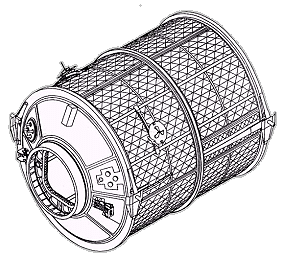 |
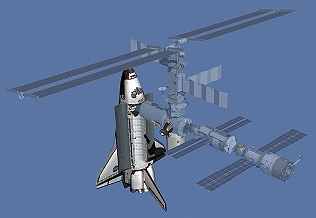 |
 |
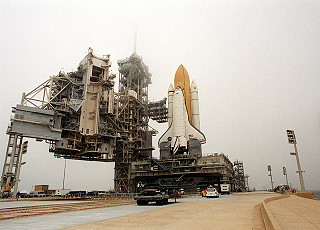 |
 |
 |
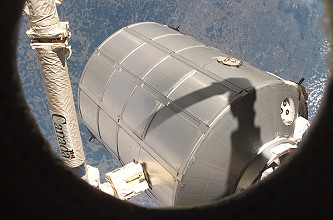 |
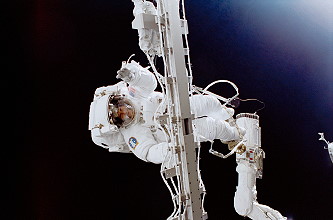 |
 |
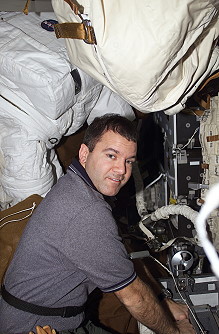 |
 |
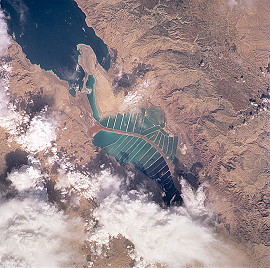 |
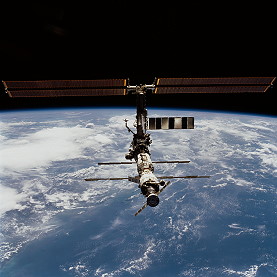 |
 |
 |
 |
|
more EVA photos |
|
| © |  |
Last update on March 27, 2020.  |
 |